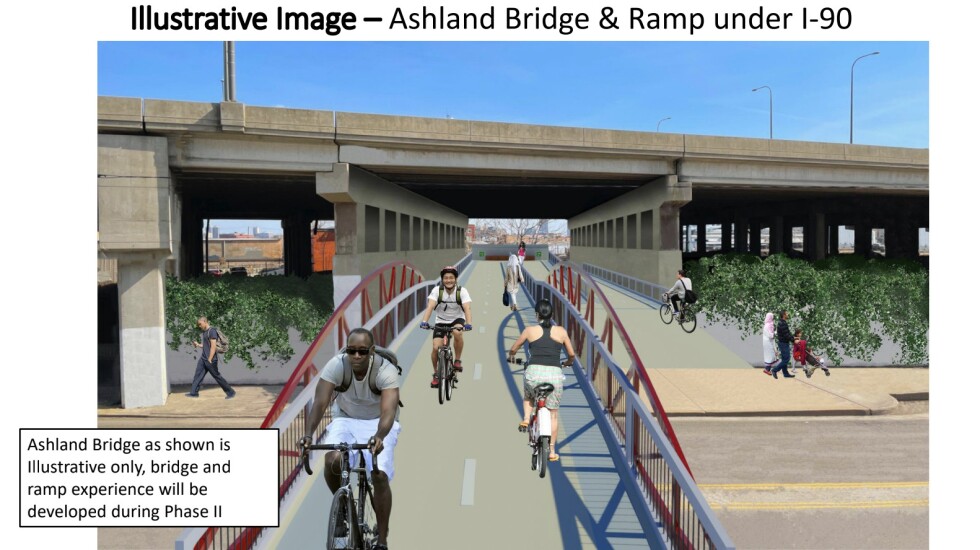
Bikers and walkers who frequent the Bloomingdale Trail will be able to take it even farther in a few years.
City officials recently announced initial plans to extend the trail east to Elston Avenue in 2026. Preliminary engineering work has begun on the project, which is expected to cost $30 million to $40 million, according to the Chicago Department of Transportation.
The elevated trail runs between Ridgeway Avenue on the west and ends near Ashland Avenue on the east. The Chicago Park District uses “the 606” to refer to the Bloomingdale Trail and the adjacent parks along the 2.7-mile route, which connects Wicker Park, Bucktown, Humboldt Park and Logan Square.
The project will extend the trail just past Elston Avenue. It’s only about 1,200 feet, but it will get trail users past two big obstacles: the Kennedy Expressway and a series of railroad tracks.
The project includes a new bridge over Ashland, a new pedestrian underpass at the unused railroad tracks and rehabilitation of a bridge over Elston, according to CDOT. The extension goes under the Kennedy, which is elevated at that location.
Eastward expansion plans include land under the jurisdiction of CDOT, the park district, Cook County and Union Pacific Railroad. The project is being executed in coordination with the Lincoln Yards mixed-use development, real estate developer Sterling Bay’s $6 billion megadevelopment that will sit at the juncture of Bucktown, Wicker Park and Lincoln Park.

The city is doing environmental studies and coordinating with those who could be affected by the extension.
After that will come detailed engineering, with construction scheduled to start in 2025.
The $750,000 cost of the project’s first phase is being paid by Sterling Bay, CDOT said.
Funding for the rest of the project hasn’t been determined, but it is expected to be a combination of federal grants, as well as money from the state, Cook County and the city, CDOT officials said.
Officials recently discussed the logistics and details of the project with community members at Sterling Bay’s life sciences building at Lincoln Yards, 1229 W. Concord Place.
“We’re thrilled to see planning for this important public amenity move forward, eventually providing pedestrians and bicyclists access to the 606 on either side of the Chicago River at Lincoln Yards,” said Amanda Vanek, Sterling Bay’s communications manager.
Ben Helphand, co-founder and president of Friends of the Bloomingdale Trail, a community organization, said he’s excited to see preliminary work get underway. Connecting Ashland to Elston is important for walkers and bike commuters, he said.
“Ashland is a barrier for biking and walking. The highway is a barrier, and the railroad is a barrier,” Helphand said. “To figure out how to get beyond those things so that folks don’t have to zigzag through difficult crossings, it opens up the Bloomingdale Trail to more usage, more connections between neighborhoods, more biking and walking in general.”
The 606 will be extended again when bridges over the Chicago River are built, according to CDOT.
Helphand said outdoor spaces like the Bloomingdale Trail are essential in Chicago to improve community health, and residents from all backgrounds deserve access to the outdoors.
“It’s an increasingly atomized and fractured world,” Helphand said. “There are fewer spaces where people are out in public together from all walks of life, and the Bloomingdale Trail is one of those places where everybody gets to rub elbows.”








